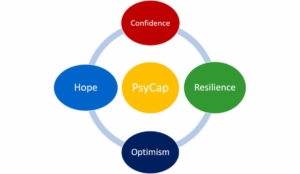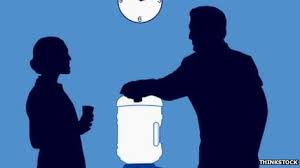Four Steps to Boost
Your Inner HERO
Dear Springboard:
Covid has been quite a ride. The uncertainty, disruptions of routines, isolation and limited socializing have all taken a toll. I don’t feel like my old self – not as confident or optimistic as before Covid.
Sign me,
Down But Not Out
Dear DBNO:
You may recall that a study from last year showed that the number of people reporting signs of anxiety and depression spiked from a fairly steady status quo of 10% to 40% due to the conditions of Covid. And, the youngest adult segments were affected the most.
For some clients, I have been using an approach in my leadership coaching that is empowering for these leaders. The process can result in higher job satisfaction, greater commitment, less cynicism and reduced intentions of quitting, the last being particularly important today. These types of outcomes have been documented in peer-reviewed published research reports.
The positives are the result of nurturing and increasing one’s Psychological Capital, or PsyCap.
PsyCap is defined as an individual’s positive psychological state and is characterized by four components — Hope, Self-Efficacy, Resilience, and Optimism. Each of these alone can be a positive influence on one’s mental health and growth mindset. Combined, there is synergy and they support and reinforce each other for even greater positive impact.
The champions of PsyCap propose that it has large impact on what we believe we can do, what we actually do, and who we become.
I have been using a simple online assessment to help clients gauge their perspective and relative strength for each of these components. Their report details their relative strength of the four core components of PsyCap. That information sets us up with a personalized focus for some written exercises to start the process of developing more robust PsyCap.
Taking a closer look at PsyCap, these familiar words have slightly different nuances in this context.

One’s degree of Hope is determined by their ability to both set achievable goals and then make a plan to reach those goals with the expectation of success. It also includes the buoyancy and the flexibility to create and act on contingency plans if faced with resistance.
Self-Efficacy, or the E in the HERO acronym, can also be interpreted as the confidence to take on a challenging task and put in the necessary effort to succeed. Research has found a strong correlation between efficacy and work-related performance.
Resilience is defined here by the ability to bounce back from adversity and problems to attain success. It also includes the ability to adapt to new and challenging circumstances which can be positive, such as a bigger job with responsibilities that require new behaviors that are a stretch.
Optimism in our everyday language translates to expecting positive events in the future. Looking through the PsyCap lens, “Optimism is an explanatory style that attributes positive events to personal, permanent and pervasive causes and interprets negative events in terms of external, temporary and situation-specific factors,” according to Martin Seligman, a champion of Positive Psychology.
Conversely, a pessimistic explanatory style interprets positive events as occurring from external factors and negative events from personal factors.
Another way to think of an optimistic perspective – when good things happen, I had a hand in it and when bad things happen, I think the outcome is due to circumstances out of my control.
A pessimistic perspective is the opposite –attributing positive outcomes to external factors; and for negative outcomes, blaming ourselves.
The bottom line for me is that all these factors contribute to one’s agency and the inclination to take action that leads to desirable outcomes.
Given the volatile, uncertain, chaotic and ambiguous (VUCA) world we are living in, increasing PsyCap – our own and others – is an opportunity for a distinct advantage we shouldn’t miss.
From the Watercooler
springboard

